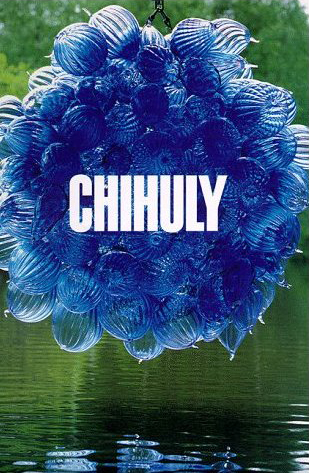 Chihuly
Chihuly
by Donald Kuspit (Author), Dale Chihuly (Author), Jack Cowart (Introduction), Harry N. Abrams: October 1997, 343pp. (hardcover)
For more than 30 years, Dale Chihuly’s work, principally in glass (but occasionally including such unconventional media as neon and ice), has challenged traditional distinctions between craft and art. Chihuly’s oeuvre is notable for its vibrancy of color, the boldness of its shape and execution, and, in recent years, its studied mimicry of natural forms, from cacti to seaweed and jellyfish. The scale of these blown-glass works ranges from pieces suitable for a coffee table to vast hanging chandeliers that drape from ceiling to floor or shoot up like Christmas trees from below. At times, Chihuly’s work is merely decorative, a collection of brightly colored, softened glass forms that resemble melted Christmas tree ornaments, sea anemones, squash, wriggling eels, and other organic shapes. The dizzying abundance of work created by Chihuly himself and his students-cum-assistants at his Pilchuk Glass School, and the enormously successful marketing of this art (Pilchuk, located near Seattle, is open to visitors), has lead some viewers to an overfamiliarity with the work. But art critics Donald Kuspit and Jack Cowart argue for its originality and importance in their introductory essays. (Perhaps overly so: Cowart compares the pieces to Matisse, Turner, and Walt Disney’s Fantasia, while Kuspit evokes Freud, symbolism, and T.S. Eliot to argue for the works’ seriousness of intent.) Even those readers familiar with Chihuly will be impressed with the capacious variety of form and function–candy bowls to chandeliers–captured in over 280 pages of photographs that exhaustively chart the artist’s creations, along with the two essays mentioned above and a biographical time-line. For Chihuly fans who may not be able to afford a Chihuly original of their own, this book is the next best thing. – John Longenbaugh
